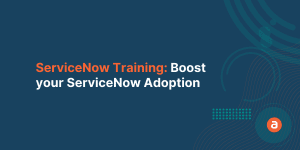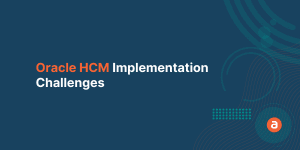Several companies are undergoing Digital Transformation Metrics to leverage the latest technology and improve their business. The pandemic has forced companies worldwide to speed up digital initiatives to drive their business and respond to the crisis. C-level executives prioritize digital investments in the right way to fuel future growth. According to McKinsey, companies that take a comprehensive approach to digital transformation are 1.5 times more likely to report strong revenue growth than their peers.
Business leaders have initiated Digital Transformation (DX), but only 30% of DX efforts succeed. Companies spend thousands of dollars on Digital Transformation initiatives, but the success rate remains minimal. A survey by Boston Consulting Group found that 70% of digital transformations fall short of their objectives, often with profound consequences.
This alarming situation needs to be addressed with innovative solutions. The first step to being successful with digital initiatives is to find out if your company is making digital transformation progress with the help of clearly defined metrics. These digital transformation KPIs are crucial for measuring success and ensuring tech investments yield the desired outcomes.
What is Digital Transformation Progress?
Digital transformation progress refers to the measurable advancements a company makes as it integrates digital technologies into all areas of its business, fundamentally changing how it operates and delivers value to customers. It is not just about adopting new technologies but about reshaping the company culture, improving business processes, and enhancing customer experiences.
Key indicators of digital transformation progress include improvements in efficiency, revenue growth, customer satisfaction, and innovation. By tracking specific digital transformation KPIs, companies can assess whether their digital initiatives are on track and achieving the desired impact. Understanding how to measure digital transformation progress is essential for ensuring that your business transformation metrics align with your strategic goals.
Regularly evaluating these digital transformation KPIs, businesses can ensure they are progressing towards their transformation goals and making informed decisions about future investments. This approach helps in determining how to measure success of digital transformation efforts effectively.
How to measure digital transformation progress?
Organizations undertaking Digital Transformation must have scalable initiatives that can improve business performance. Measuring exactly how your digital assets are used by your employees helps you understand whether your new tools are effective. Ensuring this helps you move forward in DX efforts.
Measuring digital transformation progress is crucial for ensuring your digital initiatives deliver the expected outcomes. Here are vital steps and digital transformation KPIs to help you assess your progress effectively:
Define Clear Objectives:
Select the digital transformation KPIs that best reflect your objectives. These could include customer satisfaction scores, employee productivity levels, revenue growth rates, operational efficiency measures, and innovation rates. It’s also essential to track business transformation metrics to gauge the broader impact of your initiatives.
Identify Relevant KPIs:
Select the digital transformation KPIs that best reflect your objectives. These could include customer satisfaction scores, employee productivity levels, revenue growth rates, operational efficiency measures, and innovation rates. It’s also essential to track business transformation metrics to gauge the broader impact of your initiatives.
Collect and Analyze Data:
Gather data regularly to track your selected KPIs. Use advanced analytics tools to analyze this data and gain insights into your digital transformation progress. For instance, monitoring digital adoption rates can help you understand how well employees and customers embrace your new technologies.
Benchmark Against Industry Standards:
Compare your performance against industry benchmarks to identify areas where you excel and areas that need improvement. This comparison can provide valuable context for understanding your digital KPIs and how they stack up against competitors.
Regularly Review and Adjust:
Continuously review your digital transformation metrics and adjust your strategies as needed. This ongoing evaluation helps ensure that your digital initiatives remain aligned with your business goals and can adapt to changing market conditions.
Engage Stakeholders:
Keep all stakeholders informed about the progress of your digital transformation. Regular updates and transparent reporting on your KPI digital and CIO KPIs foster a culture of accountability and collaboration.
Use Real-Time Dashboards:
Implement real-time dashboards to visualize your digital transformation KPIs. These dashboards provide an at-a-glance view of your progress and can help you make data-driven decisions quickly.
Relevant Read: The 9 Pillars of Creating an Outstanding Digital Adoption Strategy
Measuring the impact of digital transformation
There are two ways to measure the impact of digital transformation: through metrics and by the qualitative analysis of your business.
Understanding the impact of your digital transformation initiatives is essential for determining their success and guiding future strategies. Here are some key areas to focus on when measuring the impact of digital transformation:
- Customer Experience: Improving customer experience is often a primary goal of digital transformation. Measure customer satisfaction through metrics like Net Promoter Score (NPS), Customer Satisfaction Score (CSAT), and Customer Effort Score (CES). Positive changes in these scores can indicate that your digital initiatives are meeting customer needs and enhancing their experience.
- Operational Efficiency: Assessing operational efficiency involves tracking cycle time reduction, cost savings, and process automation rates. For example, adopting robotic process automation (RPA) can lead to significant cost reductions and efficiency gains. According to Deloitte, organizations implementing RPA achieve an average of 20% to 30% cost savings.
- Revenue Growth: One of the most direct measures of digital transformation’s impact is revenue growth. Analyze revenue from digital channels, new business models, and enhanced customer experiences. A study by IDC predicts that by 2023, digital transformation will add $18 trillion in new business value worldwide.
- Innovation and Agility: Measure the rate of innovation by tracking the number of new products or services launched, patents filed, and the time taken to bring innovations to market. Additionally, assess how quickly your organization can respond to market changes and customer needs, reflecting the agility gained through digital transformation.
- Employee Engagement and Productivity: Digital tools can significantly impact employee engagement and productivity. Use metrics like employee satisfaction surveys, adoption rates of digital tools, and productivity benchmarks to evaluate the effectiveness of your digital initiatives. Gallup research shows that companies with high employee engagement are 21% more profitable than those with low engagement.
- Market Position and Competitive Advantage: Evaluate changes in market share and competitive positioning as indicators of your digital transformation progress. Enhanced digital capabilities can help you outperform competitors and capture a larger market share.
- Data-Driven Decision Making: The ability to make decisions based on data analytics is a critical outcome of digital transformation. Measure the extent to which data analytics are used in strategic decision-making processes. Companies that leverage data effectively are 23 times more likely to acquire customers, six times as likely to retain customers, and 19 times as likely to be profitable.
These metrics include customer satisfaction scores, revenue growth and retention, and employee productivity. To measure success, you’ll need to determine what metrics are most important for your digital strategy.
Focusing on these areas and using relevant digital transformation KPIs, you can gain a comprehensive understanding of the impact of your digital initiatives. This approach ensures that your investments in digital transformation are delivering tangible benefits and driving business success.
What are Digital Transformation Metrics?
Digital transformation metrics are essential measurements to assess the progress of your digital transformation efforts. Organizations can use these metrics to determine how well their digital transformation strategy is working and whether or not it needs to be adjusted. They serve as a way to track progress and understand how things are going. By focusing on specific digital KPIs (Key Performance Indicators), companies can gauge how well their digital efforts contribute to overall business objectives.
According to Gartner, almost half of all organizations have no defined digital transformation metrics. Let’s explore some key metrics that can help enterprises achieve their DX goals.
Tracking the digital transformation KPIs and business transformation metrics, organizations can gain a clear understanding of their progress and areas needing improvement. These digital metrics provide a roadmap for continuous enhancement, ensuring that digital transformation efforts are aligned with business goals and delivering tangible benefits.
What are the Key Digital Transformation Metrics to know?
- Return on Digital Investments (ROI)
- Workforce Productivity
- Adoption and Performance Metrics
- Customer Experience and Satisfaction
- Active Usage Metrics
- Cost of Digital Initiatives
- User Engagement and Participation Level
- Digital Skills and Training
- Innovation Rate
- Digital Revenue Contribution
Return on Digital Investments
Return on Digital Investments is a crucial metric for understanding the financial impact of your digital transformation efforts. This metric measures the return generated by digital initiatives relative to their cost, providing a clear picture of the financial benefits derived from your digital investments.
Financial KPIs measure the financial implications of your digital transformation initiatives. These metrics estimate the cost of your digital efforts and their impact on your bottom line. While returns may take some time to appear, measuring them ensures you’re getting your money’s worth both in the long and short term.

Return on Investment is among the most popular KPIs for any new initiative. After all, you want to be sure you’re getting your money’s worth when purchasing new technology.
Focusing on Return on Digital Investments as a key digital transformation KPI can ensure organizations make financially sound decisions that support their broader business goals. This metric is integral to measuring digital transformation progress and ensuring the success of digital initiatives. Additionally, it is important to understand how to measure the success of digital transformation to continuously improve and achieve desired outcomes.
Workplace Productivity
Workforce Productivity is a critical metric in assessing the success of your digital transformation efforts. This metric measures the efficiency and output of your employees, highlighting the impact of digital tools and processes on overall productivity. By tracking workforce productivity, organizations can understand how digital initiatives enhance employee performance and contribute to business goals.
Employee productivity is one of the best KPIs to measure the impact of your digital transformation efforts. Workforce productivity is the value or volume of an employee’s output relative to the time invested.

To identify whether new tools help enterprises improve workforce productivity, they need to find answers to questions like:
- Are employees able to optimize their work hours?
- Are they engaged throughout the process?
- Does task automation provide more time for strategic thinking?
- Are they able to work on complex tasks more efficiently than before?
The answers to these questions can help you analyze whether your employees are being productive and using the tools effectively.
Employee feedback indicates that the platform has streamlined communication and reduced the need for lengthy meetings, further enhancing productivity. This example illustrates how measuring workforce productivity through specific metrics can demonstrate the positive impact of digital transformation.
Organizations can maximize the benefits of their digital initiatives by focusing on workforce productivity as a critical digital transformation KPI. This metric is essential for measuring digital transformation progress and understanding how to measure digital transformation effectively. Tracking business transformation metrics like workforce productivity provides valuable insights into the overall success of digital transformation efforts.
Adoption & Performance Metrics
Adoption and Performance Metrics are essential for understanding how well your organization’s digital transformation initiatives are being embraced and utilized. These metrics provide insights into the effectiveness of new digital tools and processes and highlight areas where further improvements might be necessary.
Adoption simply means how well your employees use digital and business transformation tools. It is one of the most important business transformation metrics, and a high digital adoption rate is one of the key indicators of a successful digital transformation.
Poor adoption and performance rates can be due to the tool’s complex functionalities or a lack of user engagement. In both scenarios, leveraging a Digital Adoption Platform (DAP) can be highly beneficial. With a good DAP, you can enable smooth adoption and improve employee performance.
A DAP’s on-screen guidance keeps employees engaged and allows them to perform complex tasks simply by following its interactive software walkthroughs. It provides a clear picture of employees’ progress and helps identify and resolve bottlenecks as soon as possible as soon as possible.
“Our future success is directly proportional to our ability to understand, ADOPT, and integrate new technology into our work“
– Sukant Ratnakar
Feedback from employees indicates that the new tool has significantly reduced the time spent on administrative tasks, allowing them to focus more on strategic activities. Task completion rates have improved, with projects being delivered on time more consistently.
Adoptiong adoption and performance metrics as key digital transformation KPIs can help organizations ensure their digital tools are effectively integrated and deliver the expected benefits. These metrics are essential for measuring digital transformation progress and understanding how to measure the success of digital transformation efforts.
Customer Experience & Satisfaction metrics
Customer Experience and Satisfaction metrics are crucial for understanding how well your digital transformation initiatives meet customer needs and enhance their overall experience. These metrics provide insights into customer loyalty, satisfaction, and the effectiveness of your digital strategies in improving customer interactions.
Customer experience is key to building a loyal customer base. Measuring how customers engage with and use your platform or product is crucial for long-term success.
To effectively measure customer experience and satisfaction, consider the following steps:
- Net Promoter Score (NPS): NPS measures customer loyalty by asking customers how likely they are to recommend your product or service to others. This metric is calculated by subtracting the percentage of detractors (those who rate you 0-6) from the percentage of promoters (those who rate you 9-10). A high NPS indicates strong customer loyalty and satisfaction.
- Customer Satisfaction Score (CSAT): CSAT assesses customer satisfaction with a specific interaction or overall experience. Customers rate their satisfaction on a scale, typically from 1 to 5. The average score indicates how satisfied customers are with your services or products.
- Customer Effort Score (CES): CES measures the ease with which customers can accomplish a task or resolve an issue. A lower score indicates that customers find it easy to interact with your company, which often correlates with higher satisfaction and loyalty.
You can also use customer engagement and conversion metrics to see if your audience connects with your marketing materials and digital presence. These metrics might include website traffic sources, subscriptions & signups, or the number of demos scheduled.
Adopting customer experience and satisfaction as key digital transformation KPIs, organizations can ensure their digital initiatives effectively enhance customer interactions and drive business success. These metrics are essential for measuring digital transformation progress and understanding how to measure the success of digital transformation efforts.
Active Usage Metrics
Active Usage Metrics are crucial for evaluating the engagement and utilization of digital tools and platforms within an organization. These metrics provide insights into how frequently and effectively users interact with digital solutions, indicating their overall value and impact on business processes.
Successful Digital Transformation requires sustainable technology adoption. One of the best digital transformation KPIs to measure is the active usage of your digital assets. This can be done by comparing the number of licenses purchased to the number of software users.
Digital transformation metrics like daily active users, conversion rates, and abandon rates can also help you get an overall view of the software adoption rate. For example, if your findings indicate that more than 85% of users are utilizing the software, you can assume that software adoption is successful. Poor technology adoption is an obvious barrier if the number of active users is less than 50%.

Is your company making digital transformation progress? A low adoption rate can hinder your digital transformation progress. You must know how to measure digital transformation effectively to ensure successful technology adoption in your organization. Take a closer look at what digital adoption is and why it is important to ensure digital transformation success.
Focusing on active usage metrics as key digital transformation KPIs, organizations can ensure their digital tools are effectively integrated and deliver the expected benefits. These metrics are essential for measuring digital transformation progress and understanding how to measure the success of digital transformation efforts.
Tracking these digital KPIs for business development allows organizations to clearly understand their progress and areas needing improvement. These digital metrics provide a roadmap for continuous enhancement, ensuring that digital transformation efforts are aligned with business goals and delivering tangible benefits.
Cost of Digital Initiatives
The cost of Digital Initiatives is a critical metric for understanding the financial implications of your digital transformation efforts. Tracking these costs helps organizations manage budgets, assess the return on Investment (ROI), and ensure that digital initiatives are financially sustainable.
Direct investments in Digital Transformation are projected to reach a total of $7.8 trillion between 2020 and 2024. Successful digital transformation initiatives can increase revenue from digital investments. CEOs must monitor the money spent on technology and measure what percentage of their digital investments influence revenue.
Companies that spend only a small proportion of their budget on digital initiatives are unlikely to get high returns. To maximize ROI, direct enough resources towards boosting the adoption of new digital tools. There must be a balance point. After this “balance point” stage, organizations start to over-digitalize. This shouldn’t happen. The law of diminishing returns occurs after reaching the balance point in digital business. A proper investment plan can help you reach this balance point.

Digital transformation can vary for each organization, but these are some key metrics that you can rely on. No matter what metrics your company leverages, the first step to achieving the expected ROI is determining how to measure digital transformation.
Focusing on the cost of digital initiatives as a key digital transformation KPI can ensure organizations make financially sound decisions that support their broader business goals. This metric is integral to measuring digital transformation progress and understanding how to measure the success of digital transformation efforts.
Tracking these digital transformation KPIs alongside other digital and business transformation metrics ensures a holistic view of your digital transformation journey. Understanding the CIO KPIs and KPIs for business development related to costs can help drive successful and sustainable digital initiatives.
User Engagement & Participation Level
User Engagement and Participation Level are essential metrics for evaluating how actively and effectively users interact with digital tools and platforms. These metrics provide insights into user behavior, satisfaction, and the overall success of digital transformation initiatives. Focusing on end-user engagement and employee participation levels can significantly advance your Digital Transformation journey.

Metrics for Employee Engagement Patterns
Some key metrics that describe employee engagement patterns include:
- Net Promoter Score (NPS): Measures the likelihood of employees recommending digital tools to others.
- Exit Rate: Tracks the rate employees leave the platform or abandon tasks.
- Employee Satisfaction Index: Gauges overall employee satisfaction with digital tools and processes.
- Bounce Rate: Measures how often employees quickly leave the platform after logging in, indicating possible dissatisfaction or lack of engagement.
Engagement needs to start from the top. According to a McKinsey report, organizations with an engaged Chief Digital Officer (CDO) are 1.6 times more likely to ensure successful digital transformation. If employees aren’t engaging as expected, it may be because the technology isn’t powerful enough to shift them from their existing work patterns. Your software might be robust, and your Digital Transformation strategy is well-planned, but all your efforts go in vain without employee engagement.
Employee engagement leads to less change resistance and faster software adoption. From an end-user perspective, the software must be impactful for them to perform their jobs and warrant their engagement. Improving your product’s User Experience (UX) and User Interface (UI) and addressing pain points promptly can keep your employees engaged.
Employee engagement → Less Change Resistance → Faster Software Adoption
Focusing on user engagement and participation as key digital transformation KPIs, organizations can ensure their digital tools are effectively integrated and deliver the expected benefits. These metrics are essential for measuring digital transformation progress and understanding how to measure success of digital transformation efforts.
Tracking KPIs for business development provides a comprehensive view of user engagement and participation, helping to drive successful digital transformation initiatives.
Digital Skills and Training
Digital Skills and Training are critical components of a successful digital transformation. Ensuring that employees have the necessary skills to effectively use new digital tools and platforms is essential for maximizing the benefits of digital initiatives.
Measuring the impact of training programs and the development of digital skills within the workforce provides valuable insights into the readiness and effectiveness of your digital transformation efforts.
How to Measure Digital Skills and Training
To effectively measure digital skills and training, consider the following steps:
- Training Participation Rates: Track the number of employees participating in digital training programs. High participation rates indicate a strong commitment to developing digital skills within the organization.
- Training Completion Rates: Measure the percentage of employees who complete digital training programs. Completion rates provide insights into the effectiveness and engagement levels of the training initiatives.
- Assessment Scores: Evaluate the assessment scores of employees before and after training programs. Improvements in scores indicate the effectiveness of the training in enhancing digital skills.
- Digital Proficiency Levels: Assess employees’ proficiency in using digital tools. This can be done through self-assessments, peer reviews, or manager evaluations. Higher proficiency levels indicate better preparedness for digital transformation.
Organizations can ensure their workforce is well-prepared to embrace new technologies by focusing on digital skills and training as key digital transformation KPIs. These metrics are essential for measuring digital transformation progress and understanding how to measure the success of digital transformation efforts.
Innovation Rate
Innovation Rate is a critical metric for measuring the impact of digital transformation on an organization’s ability to develop and implement new ideas, products, and processes.
This metric provides insights into how effectively a company fosters innovation and leveraging digital tools to drive growth and competitive advantage.
How to Measure Innovation Rate
To effectively measure the innovation rate, consider the following steps:
- Number of New Products/Services: Track the number of new products or services launched within a specific timeframe. A high rate of new product introductions indicates a strong innovation pipeline.
- Research and Development (R&D) Investment: Measure the amount allocated to R&D activities. Higher R&D spending often correlates with increased innovation, as more resources are dedicated to developing new ideas.
- Patent Filings and Approvals: Track the number of patents filed and approved. This metric provides a tangible measure of innovation and intellectual property creation.
- Time to Market: Measure the average time to bring new products or services from concept to market. A shorter time to market indicates efficient innovation processes and quicker benefits realization.
Focusing on innovation rate as a key digital transformation KPI, organizations can ensure they are continuously developing new products and services that drive business growth and meet customer needs. These metrics are essential for measuring digital transformation progress and understanding how to measure the success of digital transformation efforts.
Digital Revenue Contribution
Digital Revenue Contribution is a key metric that measures the proportion of total revenue generated from digital channels and initiatives.
This helps organizations understand the financial impact of their digital transformation efforts and assess the effectiveness of their digital strategies in driving business growth.
How to Measure Digital Revenue Contribution
To effectively measure digital revenue contribution, consider the following steps:
- Identify Digital Revenue Sources: Determine all revenue streams attributed to digital channels. This includes revenue from e-commerce platforms, digital subscriptions, online services, mobile apps, and other digital products.
- Calculate Total Digital Revenue: Sum the revenue generated from all identified digital sources within a specific period. This gives a comprehensive view of the total digital revenue.
- Determine Total Revenue: Calculate the total revenue generated by the organization within the same period. This includes revenue from both digital and traditional channels.
Tracking these digital KPIs for business development provides a comprehensive view of the financial impact of digital initiatives, helping to drive successful digital transformation efforts.
Digital Transformation KPIs
Generally, half of the companies do not have solid metrics to measure their digital transformation’s success. Companies require pre-determined indicators (KPIs) to monitor if best practices are being adopted and the digital transformation process delivers the desired results.
These KPIs can be grouped into three broad categories:
Enterprise KPIs – Measure overall progress towards strategic goals, such as profitability, revenue growth, and market position. These business transformation metrics are crucial for understanding the organization’s financial health and market standing.
Customer-centric KPIs- Measures customer satisfaction, loyalty, and lifetime value. Metrics like Net Promoter Score (NPS), Customer Satisfaction Score (CSAT), and Customer Lifetime Value (CLV) fall under this category. These digital KPIs help organizations gauge how well they meet customer expectations and retain customer loyalty.
Operational KPIs- Measure operational excellence and process efficiency. These include metrics such as cycle time reduction, cost savings, and process automation rates. Tracking operational KPIs ensures that digital tools and processes enhance efficiency and productivity.
The digital transformation KPIs are the metrics organizations need to use to measure the strength and longevity of their strategy. They are also a tool for digital transformation, an inventory of questions and metrics that can be used across every part of an organization to ensure they are working as expected.
Importance of Digital Transformation KPIs
Measuring Digital Transformation KPIs is vital for several reasons:
- Assessing Progress: KPIs provide a clear picture of the progress and effectiveness of digital transformation efforts. They help organizations track their performance against set goals and objectives.
- Making Informed Decisions: Data-driven insights from KPIs enable organizations to make informed decisions about their digital strategies. This includes identifying successful initiatives and areas needing improvement.
- Aligning with Business Goals: KPIs ensure that digital transformation efforts are aligned with overall business goals. By tracking relevant metrics, organizations can ensure that their digital initiatives contribute to achieving strategic objectives.
- Driving Continuous Improvement: Regularly evaluating KPIs allows organizations to identify trends, measure the impact of changes, and drive continuous improvement. This helps maintain momentum and ensure long-term success.
- Enhancing Accountability: KPIs foster a culture of accountability by providing measurable targets. This helps ensure that all stakeholders are committed to achieving digital transformation goals.
The digital transformation KPIs must describe your organization’s digital capabilities and activity at any given point, making these metrics vital for measuring success or failure.
Digital Transformation ROI
Digital transformation ROI is calculated by comparing the cost of implementing new technology with its benefits to the business. It’s most often used to predict whether a business will benefit from investing in new technology.
Digital transformation ROI is the return you get on your digital transformation investment. You can measure it by calculating the net effect of cost savings, revenue gains, and other benefits versus the costs incurred to implement a digital solution. This metric helps organizations understand how to measure digital transformation and its impact on overall business performance.
ROI is perhaps the most complicated to measure. But once the information is clear, the basic measurement formula is:
ROI = (profit – investment) / investment.
Consider a company that invests $1,000 in a new digital marketing platform. Over a year, the platform generates $3,000 in additional revenue. Your ROI calculation for that investment would be: (3000 – 1000) / 1000 = 2
This ROI of 2 indicates that the Investment has yielded twice the initial cost in value, demonstrating a successful digital transformation initiative.
Determining your digital transformation ROI can help you identify what’s working and what isn’t so that you can make better investment decisions in the future.
Set the right digital transformation agenda
The DT agenda helps you track and measure the success of your digital transformation strategies, ensuring you’re moving in the right direction and maximizing growth opportunities.
The goal of any digital transformation is to have a significant enough return on investment (ROI) to implement new technology. Set the right digital transformation agenda that can impact your business:
- Implementation of the latest tech
- Reduction of costs
- Increasing employee productivity
- Increasing business growth
- Improving customer satisfaction
These goals should be worked into the overall digital transformation plan and tracked using KPIs to ensure your digital transformation plan is on track.
To make a digital transformation a success, a business’s end goal should always be to improve the overall user experience and customer satisfaction.
Measure Digital Transformation Effectively with Apty
One key KPI for Digital Transformation success is Digital Adoption. Implementing the latest technology and enabling the workforce to leverage its fullest potential ensures digital transformation success.
You can take a look at some Digital Transformation examples that can help you understand how top companies like Nike, Microsoft, IKEA, and Best Buy approach Digital Transformation and how they embrace the latest technologies and achieve successful DX.
Digital adoption metrics are crucial for understanding how to measure digital transformation progress and ensuring that new technologies are fully integrated into the organization.
The Role of Apty in Digital Transformation
A Digital Adoption Platform (DAP) like Apty plays a significant role in facilitating successful digital transformation. Apty helps enterprises execute any technology-driven transformation by ensuring that employees effectively use new digital tools and processes.
- Proactive Digital Transformation: A robust DAP like Apty provides proactive support for digital transformation. It guides users through new software and processes with on-screen guidance, interactive tutorials, and real-time support. This ensures that employees can quickly adapt to new technologies and workflows, minimizing downtime and resistance to change.
- Enhancing Workforce Productivity: Apty helps measure workforce productivity by tracking how employees use digital tools and identifying areas where additional training or support may be needed. By improving digital adoption rates, Apty enhances overall productivity and ensures that the technology investments yield the expected returns.
- Supporting Continuous Improvement: Apty’s analytics capabilities provide valuable insights into how digital tools are being used, which features are most popular, and where users encounter difficulties. This data helps organizations continuously improve their digital transformation strategies and meet their goals.
Focus on Organizational Priorities:
Digital transformation must focus on addressing an organization’s most critical problems. Identifying these priorities helps determine what technology is needed and where to allocate resources for maximum impact. A DAP like Apty can help organizations identify and address these priorities by providing detailed analytics and user feedback.
- Customizable Solutions: Apty offers customizable solutions that can be tailored to meet the specific needs of an organization. This flexibility ensures that the platform can support various digital transformation initiatives, from simple software rollouts to complex enterprise-wide transformations.
- Seamless Integration: Apty seamlessly integrates with existing systems and workflows, making it easier for organizations to implement new technologies without disrupting their operations. This integration helps ensure that digital tools are adopted smoothly and effectively.
Benefits of Using Apty for Digital Transformation
- Improved User Adoption: Apty’s interactive guides and real-time support ensure that users quickly become proficient with new digital tools, leading to higher adoption rates and more successful digital transformation initiatives.
- Enhanced Productivity: By reducing the learning curve and providing ongoing support, Apty helps employees work more efficiently with new technologies, driving overall productivity improvements.
- Data-Driven Insights: Apty’s analytics provide actionable insights into user behavior and digital tool usage, helping organizations make informed decisions about their digital transformation strategies.
- Reduced Resistance to Change: Apty’s proactive approach to digital adoption reduces resistance to change by making it easier for employees to adapt to new technologies and processes.
Leveraging a DAP like Apty, organizations can measure digital transformation effectively, ensuring that their digital initiatives deliver the expected benefits and drive sustainable business growth. Focusing on digital adoption, workforce productivity, and continuous improvement, Apty helps organizations achieve their digital transformation goals and stay competitive in the digital age.













